Get Those Pests
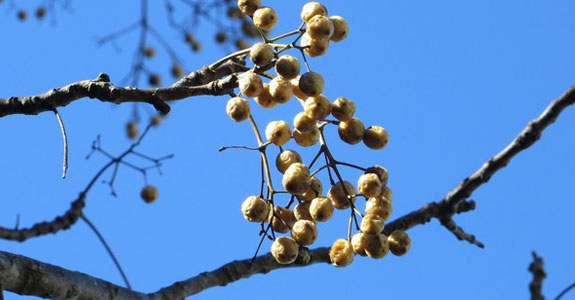
Chinaberry (Melia azedarach) is a very drought-resistant tree that was introduced from Asia into the American Southwest and Mexico in the mid-1800s. It was once prized for its ability to thrive in the worst of soil conditions. Now the tree is recognized as a harmful invasive due to this quality and its ability to grow unchecked by pests as much as 10 feet a year.
CLIFF TYLLICK CAN’T REMEMBER A TIME when he wasn’t aware that some plants were not where they belonged. Johnsongrass, Chinese tallow and chinaberry were all too common in the fields west of Houston when he was growing up.
It was a decade of coming across Chinese pistache along Austin’s Walnut Creek that motivated him to get trained as a citizen scientist through the Invaders of Texas program.
“As I walked my dogs in Austin greenbelts, I couldn’t help but notice that volunteer Chinese pistache were at least as common as young chinaberries had been way back when.
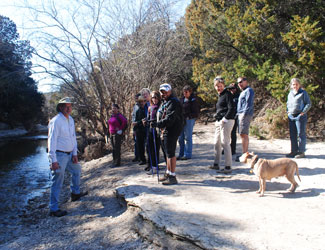
Cliff Tyllick (left) is a citizen scientist through the Invaders of Texas program. He has formed a satellite group, Walnut Creek Wild Ones, to teach others about harmful invasive plants along this urban creek. PHOTO Mick Byrne
Tyllick first took the online training at TexasInvasives.org and has attended the in-person training at the Wildflower Center twice since then. The program has trained 2,070 citizen scientists such as Tyllick, who now leads an Austin area satellite group of citizen scientists. Last week, the Texas Invasive Plant & Pest Council honored Tyllick for his dedication to the cause by naming him Satellite Leader of the Year.
The Wildflower Center coordinates the Invaders of Texas program by facilitating TexasInvasives.org and conducting invasive species trainings online and in person across the state. The program also produces a monthly iWire email newsletter and specialized invasive species fact sheets. Its invasive removal database, the Eradicator Calculator, was introduced in 2009 to allow volunteers to post invasive species removal events and calculate the costs associated with invasive species control.
The Wildflower Center Invasive Species Coordinator, Justin Bush, says citizen scientists are trained to identify and report species at their homes, while hiking in natural areas or while enjoying Texas’ many waterways. Trainees are shown pictures or the plants themselves to familiarize them with the “dirty dozen” — or 12 worst invasive species — for their community.
In Austin, where Tyllick was trained, that includes chinaberry, giant reed and heavenly bamboo. Giant reed also makes Invaders of Texas’ statewide most-wanted list that also names giant salvinia, Japanese climbing fern,Chinese privet and bastard cabbage.
Bush is impressed with how much enthusiasm there is for protecting Texas from the damages of invasive species and how effective the volunteers are at reporting and removing these invaders.
“Since this program began in 2005, volunteers have contributed more than 12,000 hours reporting 16,625 invasive species to texasinvasives.org and removing species at 557 events tracked using the Eradicator Calculator. That’s time worth $265,000.”
Tyllick does most of his reporting from Walnut Creek Metropolitan Park using his smartphone app but also has recorded invasives from San Antonio’s missions, Austin’s animal shelter, at a preserve beside his office building, the medians of city streets — and even once at the Wildflower Center.
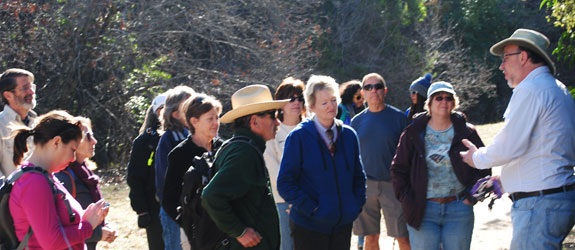
Tyllick’s hikes through his Meetup group Keep Walnut Creek Wild have averaged 20 hikers. He wants hikers to understand the implications of planting or allowing invasive plants in their landscapes so that they can make change. Starting with the most prevalent invasive trees in the watershed — glossy privet (Ligustrum lucidum) and chinaberry — Tyllick wants hikers to learn to recognize exotic invasives, the native plants they compete with and what they can do to restore a more nearly natural landscape. PHOTO Mick Byrne
His smartphone has even come in handy to educate a park’s grounds manager that invasive species were indeed a problem in his park. “I pulled out my iPhone, went to TexasInvasives.org, and showed him. That solid mass of pinpoints was hard to refute, so I got permission to remove some chinaberries that weekend. It was a place to start, and I’ll work many more projects over the coming months.”
Tyllick is committed, but realizing he can’t work alone influenced his decision to establish a Meetup group, Keep Walnut Creek Wild, in which he organizes hikes to show people what invasive plants are doing to the parks and greenbelts along this urban creek. The group is also removing trash from the creek area.
The hikes have averaged 20 hikers, which Tyllick considers a good start. “My goal is to show people what this is all about so they can understand and change their own landscapes. As for me, I now regret ever having planted a Chinese pistache.”
“In my opinion, they will be to the kids of today what the chinaberry is to folks of my generation: the tree that was here and there in yards and parks when you were young but seems to be everywhere — even in ‘wild’ spaces — by the time you’re an adult.”
Addressing that challenge is at the heart of the Invaders of Texas program. This statewide partnership between the Wildflower Center, nonprofit groups, universities, government agencies and natural resource managers trains volunteers to identify and report the invasive plants, animals, pests and pathogens that threaten Texas’ natural areas.
These are the top 5 worst invasive plants in Texas:
1. Giant salvinia (Salvinia molesta)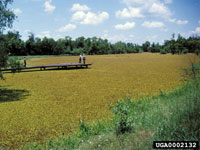
2. Japanese climbing fern (Lygodium japonicum)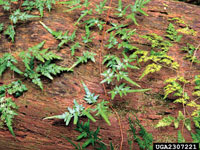
3. Giant reed (Arundo donax)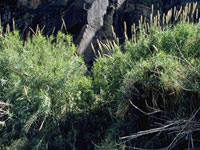
4. Chinese privet (Ligustrum sinense)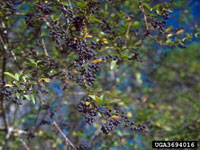
5. Bastard cabbage (Rapistrum rugosum)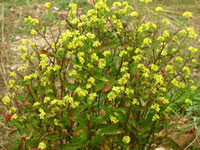
To become a citizen scientist and learn more about the Invaders of Texas program, visit TexasInvasives.org.

